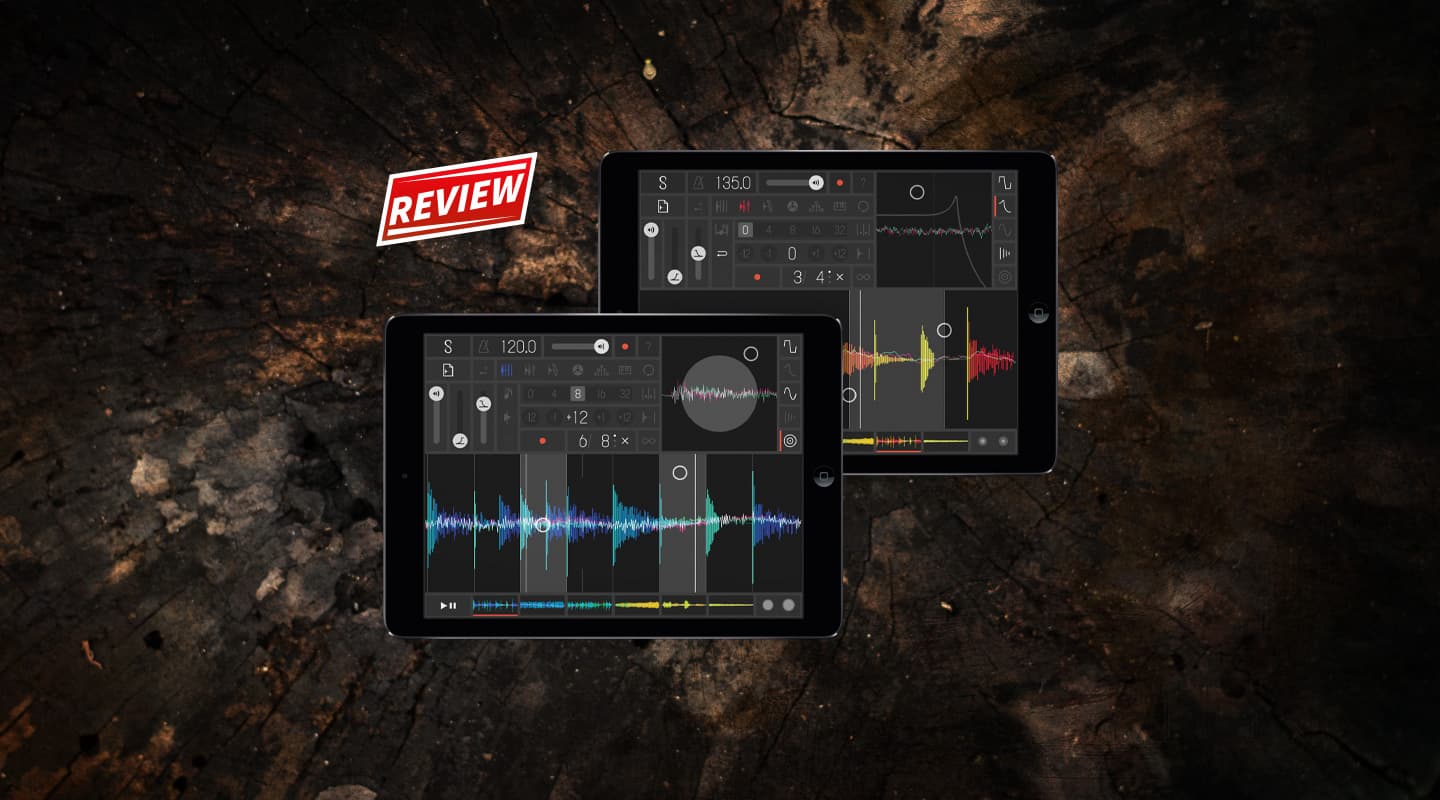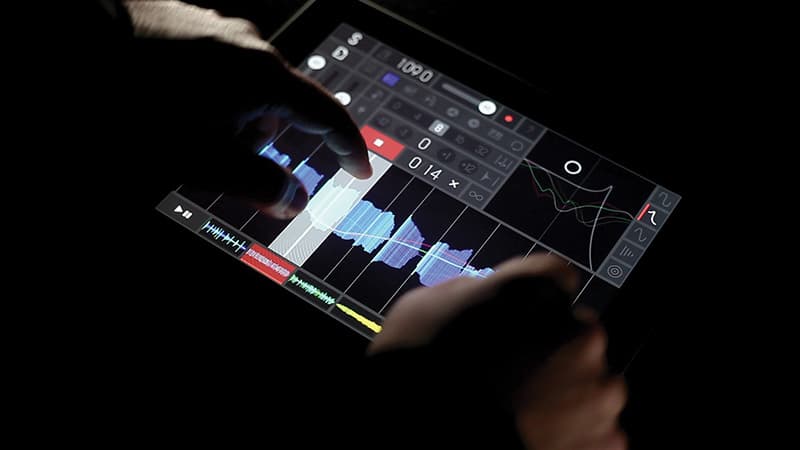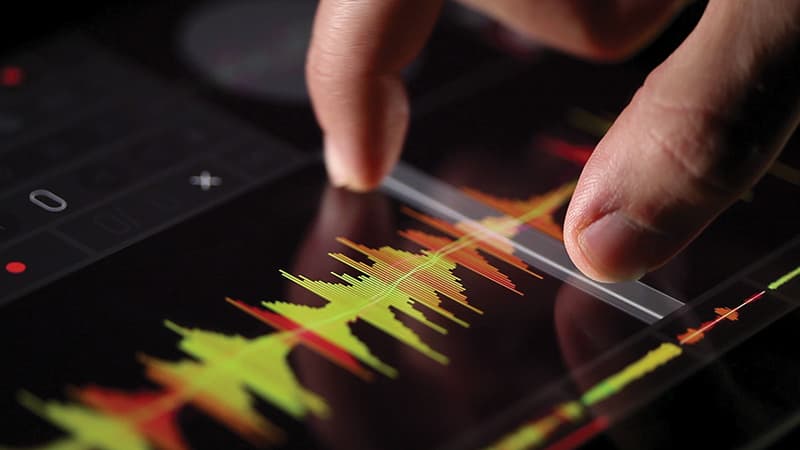
Review: Samplr iPad Instrument
Don’t just play waveforms, play with them.
Review: Tim Shiel
It’s fair to say that waveforms are rarely perceived as sensual or musical. In the context of music a waveform is simply a functional representation of the physics of sound: a dry visual indicator of passing vibrations in the air — guides that can be cut, copied and pasted with all of the glamour and vibrancy of a word processor.
In the world of Samplr, however, the waveform becomes a playable instrument, a workable material like clay or putty that can be sculpted, stretched and finessed. With no piano roll or drum pad to act as middleman, this iPad app allows you to use your fingers to directly ‘play’ a waveform via eight different multi-touch capable modes, with immediately intuitive and musical results.
For example, Looper mode allows you to loop fragments of a waveform by using two fingers as start and end points. Expand your fingers to expand the loop in realtime, move them closer together to create smaller granular-style loops. Flip your fingers around and the loop flips into reverse, and move your fingers to slide the loop region throughout the waveform. If your other hand is free, use two more fingers to add a secondary loop. Unlike the rack ’n’ stack ’em workflow of a loop pedal, the mode is designed for expressive melodic or textural performance.
Even in the hands of a newbie it feels responsive and musical; in the hands of a virtuoso, I imagine Samplr’s Looper mode (and Bow variant) could be used to devastating effect as an expressive solo instrument. Imagine a virtuoso thereminist manipulating not a single tone but any sound — a drone, a slide guitar, a music box — and doing it not with two hands, but 10 fingers. That goes some way to envisioning the potential for Samplr as a musical instrument.
NEED TO KNOW
Available on the App store for $9.99
www.samplr.net



In Tape mode your finger position adjusts tape speed, forwards or in reverse. Scratch mode could probably handle a rename though, as the results are more akin to digital jog wheeling than anything a DJ and a turntable would produce. Slicer is a more traditional trigger mode, where a sample is separated into smaller segments to be triggered individually via multi-touch. The piano roll Keyboard mode, Arpeggiator mode, and simple Loop Player mode round out the full set of playable multitouch modes.
A Samplr project can contain up to six samples, each of which can be pitch adjusted on the fly in any mode, and can be run through up to five native effects (compressor, filter, tremolo, delay and reverb). Sequences can be looped and overdubbed, plus a recently released MIDI sync feature allows for tempo matching with external sources.
Samplr comes loaded with a range of native samples from percussion loops to voice samples to recordings of a range of well-chosen acoustic instruments such as spanish guitar, hang drum and celesta. User samples can be easily added to Samplr via a Dropbox import feature — a recent update that adds a neat touch. In fact, so much about the app’s interface is thoughtful and transparent. Which is not surprising, since developer Marcos Alonso’s previous work includes the Reactable, the backlit tabletop controller that caused a stir on Bjork’s Volta tour. Marcos is a regular presence on Samplr’s community forum, where users are actively submitting feature requests and suggestions.
More than an app, Samplr is a truly remarkable multitouch performance instrument, whose potential as an expressive sound source is really only limited by your imagination and the dexterity and eloquence of your fingers. It borrows styling from Teenage Engineering’s OP-1, which isn’t a bad thing, but isn’t priced like one… also not a bad thing. An absolute must-have for anyone with an iPad.
















RESPONSES